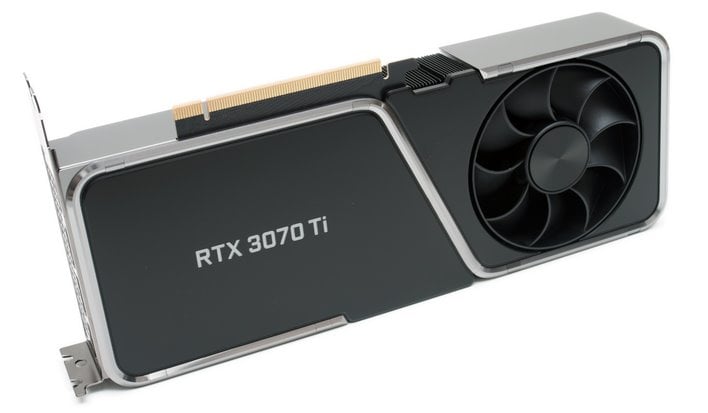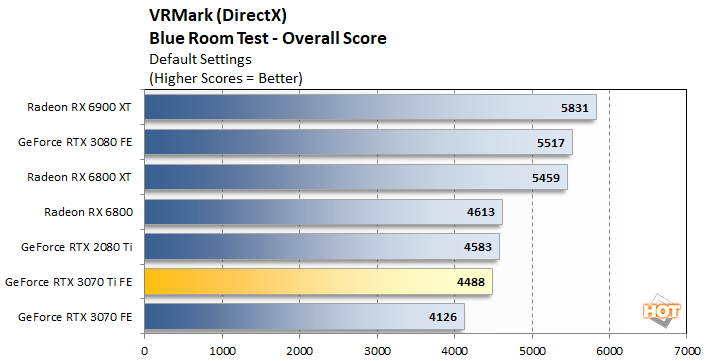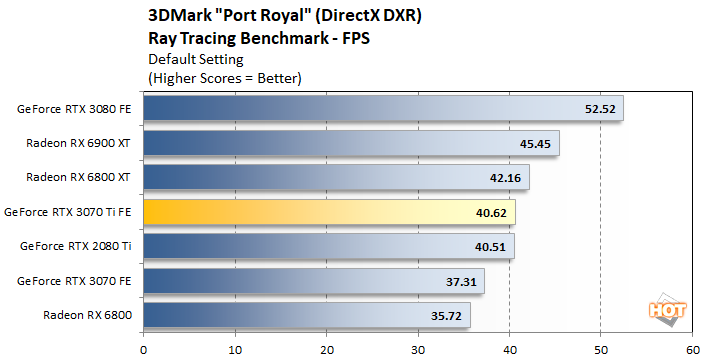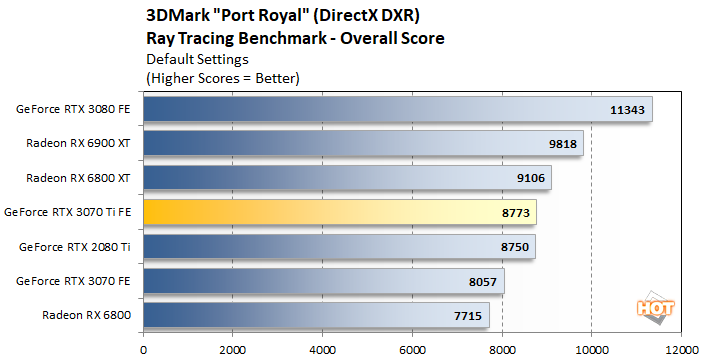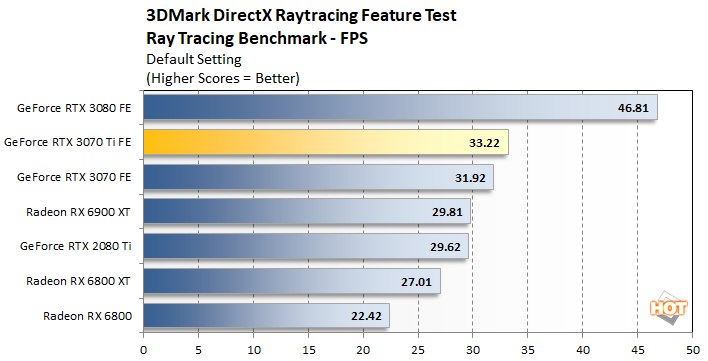GeForce RTX 3070 Ti Review: Supercharged Midrange Gaming
NVIDIA GeForce RTX 3070 Ti: 3DMark, Ungine, and VR Benchmarks
How We Configured Our Test Systems: We tested the graphics cards represented in this article on a MSI X570 Godlike motherboard, equipped with a Ryzen 9 5950X and 16GB of G.SKILL DDR4 RAM clocked at 3,200MHz. The first thing we did when configuring the test system was enter the UEFI and set all values to their "high performance" defaults, then we disabled any integrated peripherals that wouldn't be put to use. The memory's clock was dialed in to its optimal performance settings using its XMP profile and the solid state drive was then formatted and Windows 10 Professional x64 was installed and fully updated. When the Windows installation was complete, we installed all of the drivers, games, applications and benchmark tools necessary to complete our tests. For all of these benchmarks, the Radeon RX 6000 series cards were tested using their "Balanced" performance profile with Resizable BAR / Smart Access Memory enabled.
|
|
|
| Hardware Used: AMD Ryzen 9 5950X (3.4GHz - 4.9GHz, 16-Core) MSI X570 Godlike (AMD X570 Chipset) 16GB G.SKILL DDR4-3200 Samsung SSD 970 EVO Integrated Audio Integrated Network NVIDIA GeForce RTX 3070 Ti FE NVIDIA GeForce RTX 3080 FE NVIDIA GeForce RTX 3070 FE NVIDIA GeForce RTX 2080 Ti FE AMD Radeon RX 6800 AMD Radeon RX 6800 XT AMD Radeon RX 6900 XT |
Relevant Software: Windows 10 Pro x64 (v2004) AMD Radeon Software v21.3.2 NVIDIA GeForce Drivers v466.54 Benchmarks Used: VRMark 3DMark (Time Spy, Fire Strike, Port Royal, DXR) Unigine Superposition Crytek Neon Noir Metro Exodus Red Dead Redemption 2 Gears Tactics F1 2020 FarCry: New Dawn |
|
|
|
In this first test, the new GeForce RTX 3070 Ti slips about 5.5 - 6% ahead of the GeForce RTX 3070 and RTX 2080 Ti, with the Radeon RX 6800 finishing a few steps behind. There is a significant step-up in performance moving to the next tier of GPUs like the Radeon R 6800 XT or RTX 3080, though.

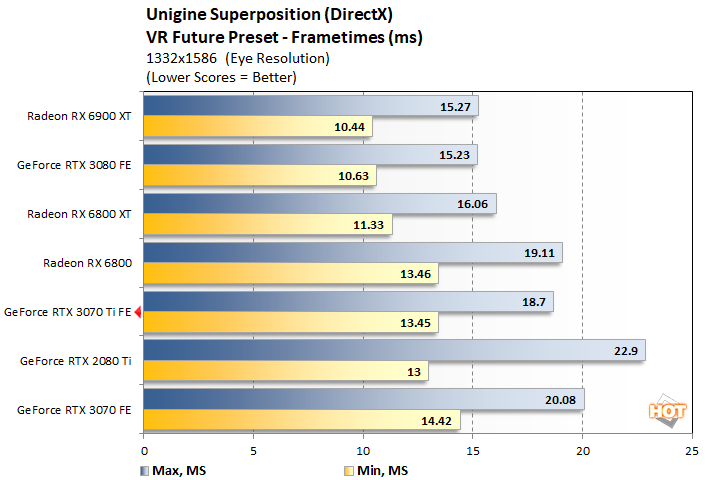
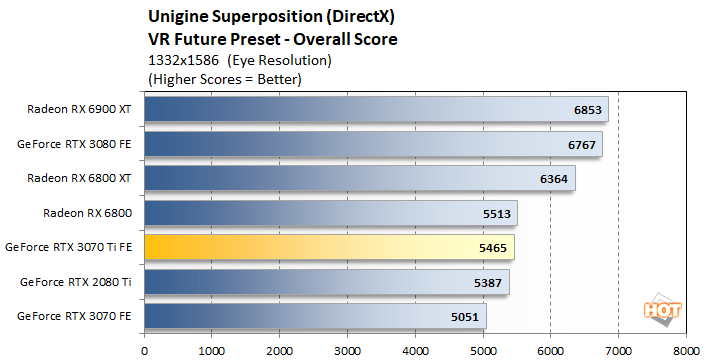
The pecking order changes somewhat in Superposition's VR Future benchmark. Here, the GeForce RTX 3070 Ti still outruns the GeForce RTX 2080 Ti and RTX 3070, but the Radeon RX 6800 squeaks past the 3070 Ti with a slight edge.
|
In our second VR-centric test, the GeForce RTX 3070 Ti slots in just behind the GeForce RTX 2080 Ti and Radeon RX 6800, but beats the original GeForce RTX 3070 by nearly 9%.
|


NVIDIA GeForce RTX 3070 Ti Time Spy Details
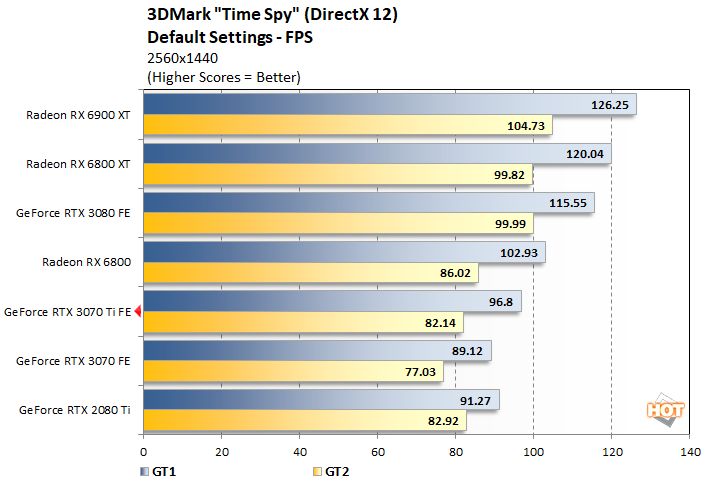
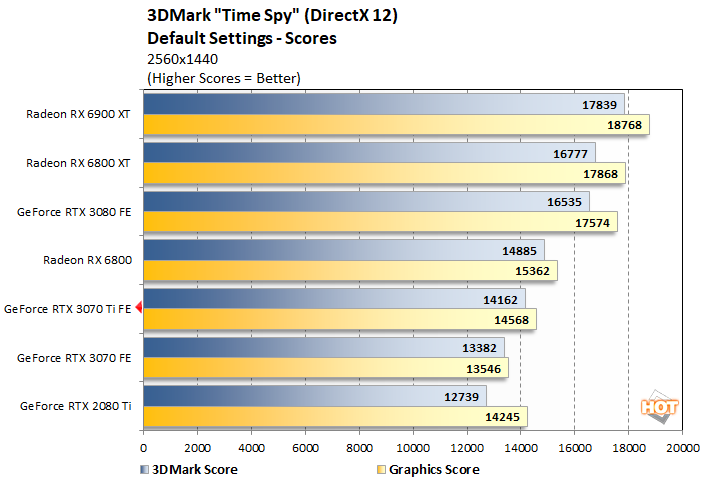
|
|
|
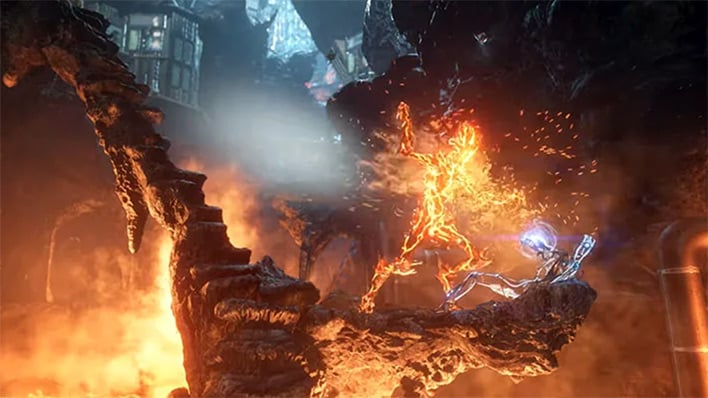
3DMark Fire Strike
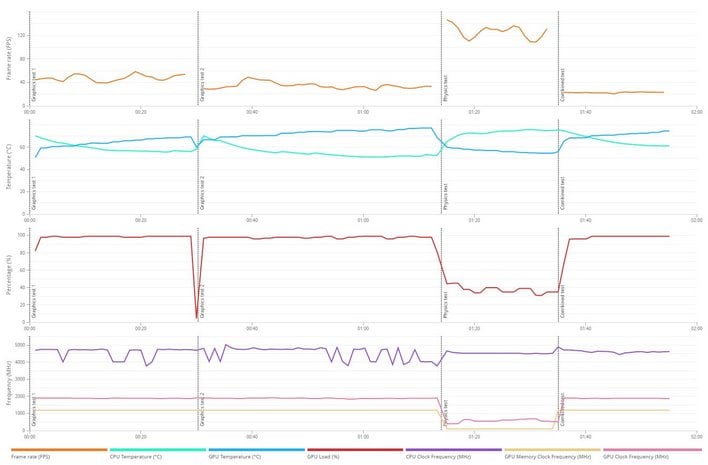
NVIDIA GeForce RTX 3070 Ti Fire Strike Details

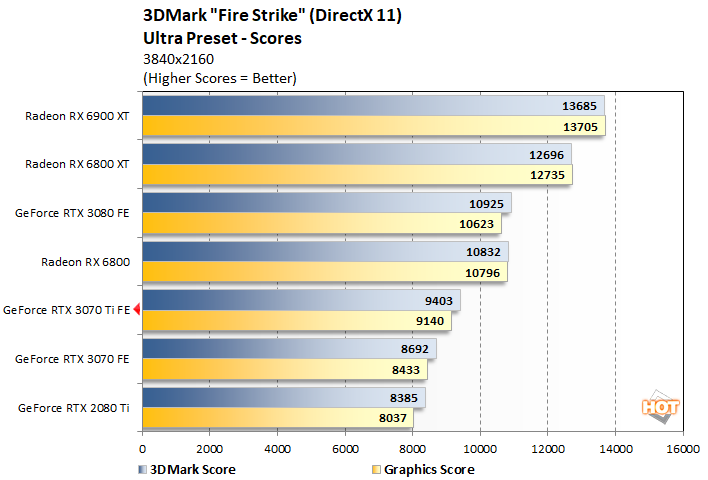
Fire Strike's pecking order looks similar to Time Spy's, but the delta separating the Radeon RX 6800 and GeForce RTX 3070 Ti is measurably larger. The few additional cores, texture units, and higher GPU and memory clocks allow the GeForce RTX 3070 Ti to pull a bit further ahead of the original RTX 3070 here, however, in this more demanding test.
|
We also did some testing with the more focused and demanding DirectX Ray Tracing Feature test, which was recently released as an update to 3DMark...
When the sole focus of the benchmarks is DirectX Ray Tracing performance, the GeForce RTX 3070 Ti looks particularly strong versus the other upper-mainstream GPUs. Here, the GeForce RTX 3070 Ti outruns every other card we tested, except for the higher-end GeForce RTX 3080. Even the Radeon RX 6900 XT falls victim to the 3070 Ti.

